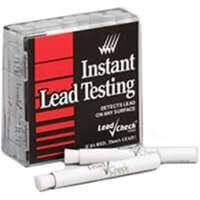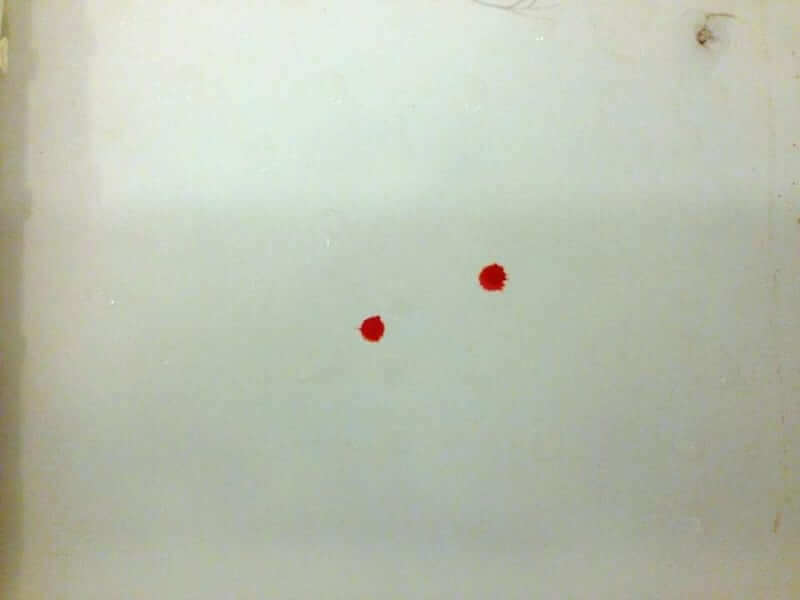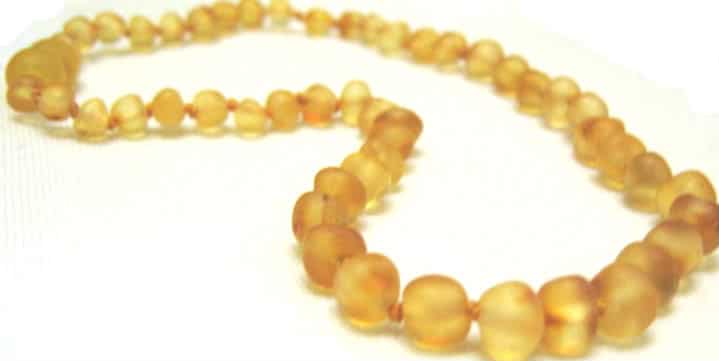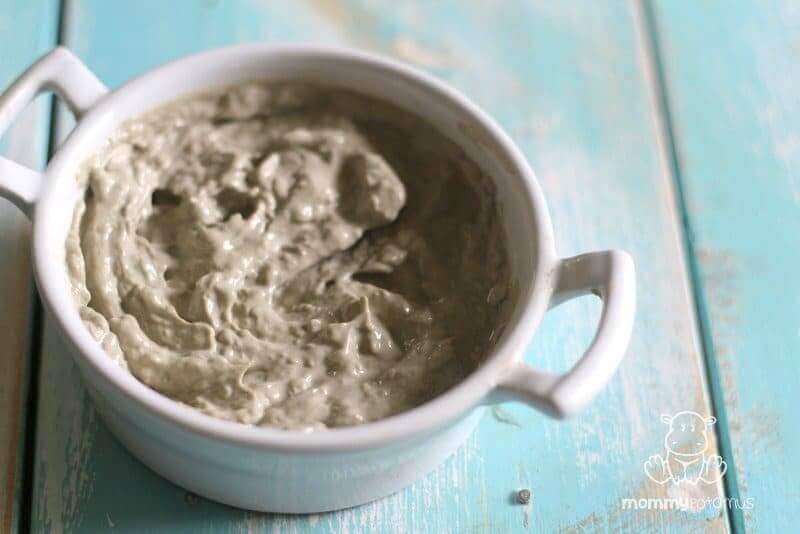
I vetted my rubber ducky’s lifeguard certification before I put him in the tub with my kiddos. Okay, not really, but as a mama I have tried to make bathtime safe. Filter to remove nasties like chlorine and heavy metals? Check! Homemade non-toxic shampoo and soap? Yep, that too.
I’d considered everything I put in the tub, but what about the tub itself?
Over the weekend a Dallas Morning News article popped up on my Facebook feed about Laura Rudeseal and her family. I immediately recognized her as one of the amazing mama’s I’ve gotten to know through this community and reached out to her to clarify some things that weren’t covered in the article.
She graciously made time to share some incredibly important info with us – thank you Laura! Here’s her story:
Earlier this year, blood tests revealed that Laura’s two small children – two-yearold Trevor and six-year-old Kassidy – had elevated levels of lead in their system. She searched for the source with no luck, so she hired an expert to come do a little detective work. After eliminating the usual suspects – door frames, windowsills, walls, etc. – he headed straight for the . . . bathroom?
Yep. Though few parents know about it, one study found that 64% of tubs tested had leachable lead on at the surface. (source) According to the Fair Housing Council of Oregon, “it has been determined that about 75% of pre-1978 bathtubs have lead in their glaze and that about 40% of these tubs will have measurable levels of lead dust when dust samples are collected from the surface of the glaze.” (FHCO)
Lead Poisoning Leads To Lowered IQ, Learning Disabilities, & Impaired Growth
According to the National Safety Council, “All it takes is the lead dust equivalent of a single grain of salt for a child to register an elevated blood lead level.” (NSC) Children under the age of six are especially vulnerable to the effects of lead exposure because their brains and central nervous systems are still developing.
“Tests in August showed Trevor and Kassidy had lead levels of 4.4 and 4.5,” wrote the Dallas Morning News, adding that “A blood lead level of less than 5 in children can cause decreased academic achievement and a lowered IQ as well as problem behaviors and attention deficit disorders. Blood lead levels less than 10 in children have been linked to delayed puberty, decreased IQ and decreased hearing.” (emphasis mine)
Here’s another article that goes into more depth on the connection between lead exposure and attention:
“There is also plenty of evidence that lead may have some causal effect in relation to ADHD. One author of a previous study states:
Similar to the effects observed in children diagnosed with attention deficit hyperactivity disorder (ADHD), experimental animals exposed to lead (Pb) exhibit behaviors attributed to “impulsivity” and ‘inability to inhibit inappropriate responding.'” (Pharmacol Biochem Behav 1998 Jun;60(2):545-52)
Another study examined the lead concentrations in children’s hair samples and compared them to attention-deficit behaviors. The authors state:
The striking dose-response relationship between levels of lead and negative teacher ratings remained significant… An even stronger relationship existed between physician-diagnosed attention-deficit hyperactivity disorder and hair lead… There was no apparent ‘safe’ threshold for lead. Scalp hair should be considered a useful clinical and epidemiologic approach for the measurement of chronic low-level lead exposure in children. (Arch Environ Health 1996 May-Jun;51(3):214-20).
Making the possibility of lead poisoning even worse are the studies showing that fluoridated water supplies can increase children’s absorption of lead, and, when lead is introduced into your body in sufficient quantities, it displaces zinc, which disrupts brain cell growth.” (source)
I have to say, I am so amazed that Laura followed her instincts and had her kids tested. Who knows what kind of potential problems she prevented by acting as soon as she had suspicions!
Is Laura’s experience an isolated one?
Unfortunately, the answer is no. Last year it was discovered that a Richmond, VA toddler was being slowly poisoned by his bathtub, and in 2010 Good Morning America reported on a family that spent $15K removing lead-based paint from their home only to find that their children’s blood still measured dangerous levels. The problem turned out to be the tub. (NBC, LeadCheck)
How many more cases are out there? Experts say that there are often no obvious symptoms of lead poisoning and the effects can take years to show up. The only reliable way to determine exposure levels is through a blood test.
So, Where Is The Lead Coming From?
The lead found in porcelain enamel glazes is usually intentionally added as a bonding or pigmenting agent. When the glaze cracks/chips or begins to wear thin due to use, the lead leaches into bathwater. This particular type of lead is not easily absorbed through the skin, but it is quickly absorbed when ingested. The main concern is with small children who are likely to drink bathwater, but as mentioned above some bathtubs may also have lead dust on the surface which could be inhaled.
Many U.S. companies have stopped using them voluntarily, but there are no regulations in place that restrict the use of lead. In other words, the brand new tubs at your local hardware store may contain lead. (Vermont Housing & Conservation Board, Dallas News, Hudson Valley Parent)
How To Test Your Bathtub For Lead

Ironically, as I type this a brand new tub is being installed in my bathroom. Though I’ve done what I can to ensure that it is unlikely to contain lead (it is made by a U.S. company and has a base of steel rather than cast iron), after it turns three years old I will be checking it every six months just to make sure that as the finish wears no lead is coming through.
The most accurate way to test for lead is with an XRF machine, which will analyze the surface and what’s underneath the surface so you can be aware of the potential for leaching as the finish wears. Unfortunately XRF machines are not readily available and you do need some training to use them, so testing with an XRF is most often done by a lead expert.
However, according to lead-poisoning prevention advocate Tamara Rubin,
The cheapest, easiest and most effective way to test for lead in a tub is to use a LeadCheck swab. In almost all cases a tub that is positive for lead will instantly turn a LeadCheck swab pink or red! In some cases a tub will have lead, but the finish will not be deteriorating/chalking and it may nottest positive with a swab (in cases like that an XRF will give a definitive, quantitative result.) In some cases the tub may take a while to turn red (depending on the type of coating) – so I recommend testing a dry tub and if it doesn’t turn red right away… check back in a couple of hours to see if either the swab used or the spot tested has turned pink or red [this is true for many of the “off-label” instances — where LeadCheck swabs may* detect lead on items that are metal or have a metal substrate (*PLEASE NOTE: strictly speaking, any chemical reagent swabs such as LeadCheck are only intended for testing house paint, and so shouldn’t be considered in anyway a definitive or reliable substitute for XRF testing of anything other than paint; that said, in some cases – such as a badly chalking leaded porcelain or enamel tub, you can often get an easy positive detection using them.)” (Rubin)
You can find the test kits from Lead Check here. Below is a photo of Laura’s tub after the test.
Note: This test may stain the tub.

What To Do If You Find Lead
I am not an expert on lead in the home, but I did find several suggestions for dealing with it’s presence while researching this post that I wanted to pass along.
- Consider switching to showers – It’s a simple solution if it’s not in your budget to take other steps and/or you are renting.
- Encapsulate your bathtub – This involves hiring an expert to paint a protective coat on top of the ceramic coating to prevent it from leaching. It is a far less expensive option than replacing the tub.
- Replace your tub – If you want porcelain instead of plastic, your best bet is to find a U.S. manufacturer that makes steel tubs coated in porcelain. You might also want to check with them and see if they will confirm whether or not they use lead in their glaze.
- Consider a detox protocol – If it were me I’d get in touch with Quicksilver Scientific. They mainly make supplements that assist with the detox of mercury, but some are thought to be helpful for lead as well. They may be a good referral source for a qualified practitioner.
Does the possibility of lead in your bathtub surprise you? Why or why not?
Want non-toxic cleaning recipes that WORK?
I’ve created a free ebook for you – 7 Non-Toxic Cleaning Recipes That Really Work – as a gift for signing up for my newsletter. We cover seven recipes that you can make in just a few minutes each for squeaky clean windows, sparkling dinnerware, lemon-fresh countertops, and more.
Want a FREE ebook of non-toxic cleaning recipes that WORK?
I’ve created a free ebook for you as a gift for signing up for my newsletter. 7 Non-Toxic Cleaning Recipes That Really Work covers seven recipes that you can make in just a few minutes each for squeaky clean windows, sparkling dinnerware, lemon-fresh countertops, and more. Subscribe to my newsletter below and you’ll be redirected to a download page for immediate access to this PDF ebook.
Sources for this post:
Lead Action Network (1996) Lead in Baths. Retrieved from Lead.org
Fair Housing Council of Oregon. The Risk of Salvaged Building Components (PDF). Retrieved from FHCO.org
National Safety Council. Lead Poisoning. Retrieved from NSC.org
DePompa, Rachel. (2012) NBC 12 Investigates: Child poisoned by bathtub. Retrieved from NBC12.com
LeadCheck (2010, July) Lead Exposure in Porcelain Enameled Bathtubs. Retrieved from LeadCheck.com
Vermont Housing & Conservation Board (2004) Facts About Lead In Porcelain & Enamel Glazes.
Wigglesworth, Valerie (2013, Oct) Dallas News: Old bathtubs found to pose lead exposure risks for children. Retrieved from DallasNews.com
Hudson Valley Parent. Lead In Bathtubs Could Be Poisoning Your Child. Retrieved from HVParent.com
Rubin, Tamara. (2013, August) Q: What about my original bathtub? Retrieved from TamaraRubin.com




